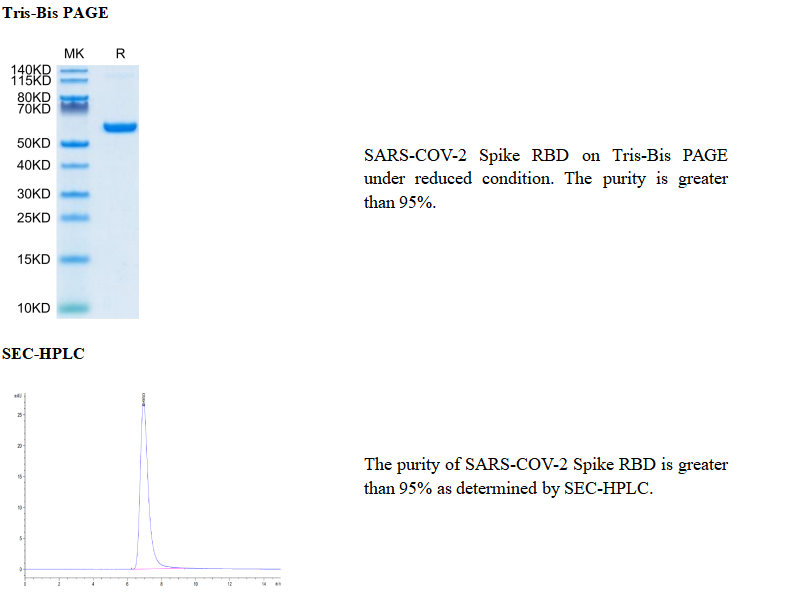SARS-CoV-2, which causes the global pandemic coronavirus disease 2019 (Covid-19), belongs to a family of viruses known as coronaviruses that also include MERS‑CoV and SARS-CoV-1. Coronaviruses are commonly comprised of four structural proteins: Spike protein (S), Envelope protein (E), Membrane protein (M) and Nucleocapsid protein (N). The SARS-CoV-2 S protein is a glycoprotein that mediates membrane fusion and viral entry. The S protein is homotrimeric, with each ~180-kDa monomer consisting of two subunits, S1 and S2 .The RBD of SARS-CoV-2 binds a metallopeptidase, angiotensin-converting enzyme 2 (ACE-2). Before binding to the ACE-2 receptor, structural analysis of the S1 trimer shows that only one of the three RBD domains is in the "up" conformation. This is an unstable and transient state that passes between trimeric subunits but is nevertheless an exposed state to be targeted for neutralizing antibody therapy. Polyclonal antibodies to the RBD of the SARS-CoV-2 protein have been shown to inhibit interaction with the ACE-2 receptor, confirming RBD as an attractive target for vaccinations or antiviral therapy. There is also promising work showing that the RBD may be used to detect presence of neutralizing antibodies present in a patient's bloodstream, consistent with developed immunity after exposure to the SARS-CoV-2.
高纯度、高活性、低内毒素、高批间一致性

-25 ~ -15℃保存,收到货之后有效期1年。 复溶后, 无菌条件下,-85 ~ -65℃保存,3个月有效期。
[94028ES]Recombinant SARS-COV-2 Spike RBD (N501Y, K417N,E484K)(His Tag)
[94041ES]Recombinant SARS-COV-2 Spike RBD(Delta B.1.617.2) Protein, His Tag
[94043ES]Recombinant SARS-COV-2 Spike RBD(Omicron BQ.1.1) Protein, His Tag
[94044ES]Recombinant SARS-COV-2 Spike RBD(Omicron BF.7/BA.4.6) Protein, His Tag
[94045ES]Recombinant SARS-COV-2 Spike RBD(Omicron XBB) Protein, His Tag
[94047ES]Recombinant SARS-COV-2 Spike RBD (Omicron BA.4/BA.5/BA.5.1.3/BA.5.2) Protein, His Tag





